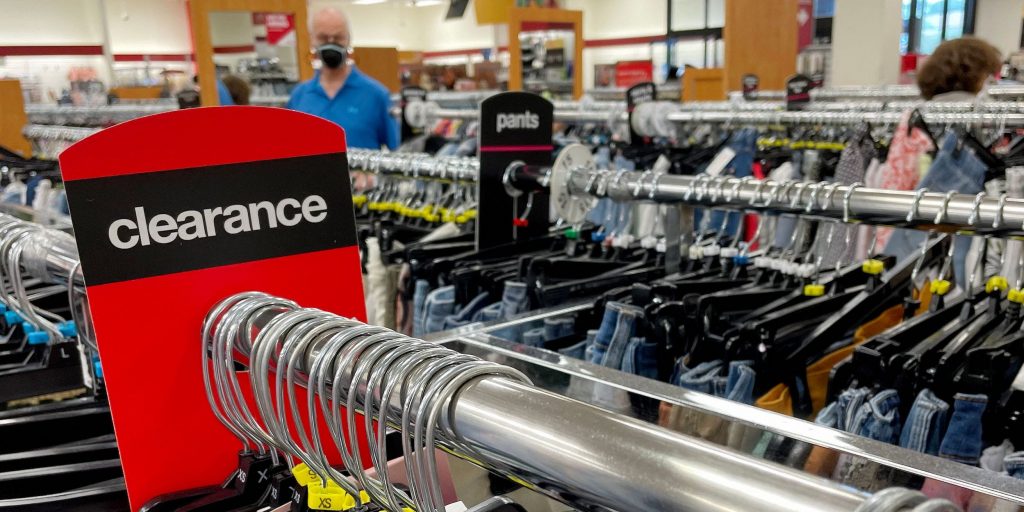- Core inflation, which excludes food and energy prices, cooled more than expected in May.
- The Thursday report hints that early 2022 may represent the peak of pandemic-era inflation.
- Yet overall price growth is still at four-decade highs due to surging food and gas prices.
The worst of the US's price-surge nightmare could be over, according to one of the most closely watched measures of nationwide inflation. Most Americans won't feel much of a difference.
The core Personal Consumption Expenditures price index rose 4.7% in the year through May, the Bureau of Economic Analysis said Thursday. The measure strips out volatile food and energy prices and is generally regarded as a better indicator of underlying inflation trends. The one-year print landed below the median economist estimate of a 4.8% pace from economists surveyed by Bloomberg. It also marked a deceleration from the 4.9% rate seen in the year through April.
The one-year core reading has now slowed for three straight months after peaking at a 5.3% pace in February. The steady decline hints that, outside of food and energy costs, the elevated inflation seen throughout the past year could be cooling. Core inflation is now the slowest since October. With the Federal Reserve poised to keep raising interest rates in hopes of easing demand, the decline is likely to continue through 2022.
The Thursday print is an encouraging sign for economists fearing inflation would accelerate further. Yet it provides little relief for Americans squeezed by higher prices. Much of the latest inflation surge has come from soaring energy and food prices. Russia's invasion of Ukraine and related sanctions crimped natural gas and oil supply earlier in 2022, leaving Americans with little choice but to stomach higher prices at the pump. Lingering supply-chain strains have also pushed prices higher, and there are few signs the situation will improve soon.
The average price for a gallon of gasoline in the US sits at $4.86, according to AAA, down only slightly from the record highs above $5 a gallon seen earlier in June. Food prices, meanwhile, are up 11% from the year-ago period, according to the PCE report.
Those factors are to blame for the growing gap between core and overall PCE. The latter measure held steady at a one-year rate of 6.3% in May, dwarfing the core print and marking the second-fastest pace since the early 1980s. The spread between the two measures is now the widest it's been in 11 years, underscoring just how much of today's inflation problem is coming from food and energy prices alone.
The gap complicates the Fed's mission. The central bank has generally viewed core PCE as its preferred inflation measure, as sudden and temporary changes in food and energy prices do not necessarily reflect the broader range of economic activity that the Fed aims to influence. Yet it's tasked with achieving overall price stability, meaning elevated food and energy prices pose a threat to the Fed's mission.
The uptick in headline PCE also poses a more existential threat. Should overall inflation remain elevated, Americans' expectations for future price growth could creep higher. That could turn high inflation from a temporary problem to a permanent one. Businesses tend to raise prices at a faster rate when inflation expectations are higher, and workers then tend to demand larger raises. This can spark a vicious cycle of ever-faster price growth and force the Fed to slam the brakes on economic growth to stop inflation from spiraling higher.
Closing the gap between core and headline PCE is a difficult task for the Fed to achieve with higher rates alone, Fed Chair Jerome Powell said during a June 15 press conference. The central bank's tools largely affect demand, while rising food and gas prices largely stem from supply problems. While the decline in core inflation is promising, its crucial that headline PCE cools before Americans start bracing for persistently high inflation, Powell said.
"Why would they be distinguishing between core inflation and headline inflation?" he added. "Core inflation is something we think about because it is a better predictor of future inflation. But headline inflation is what people experience, they don't know what core is. Why would they? They have no reason to."

